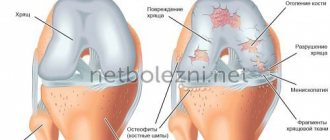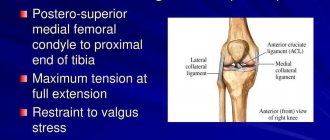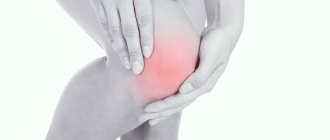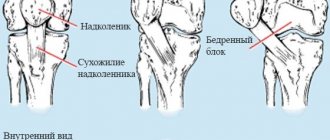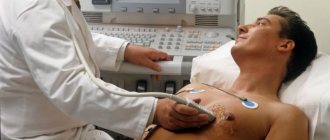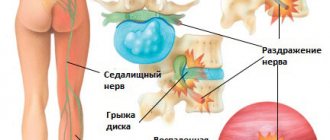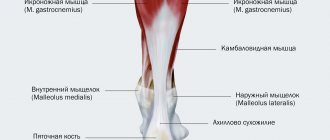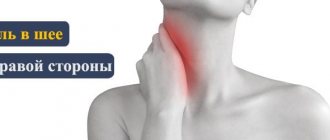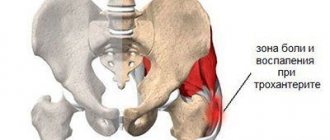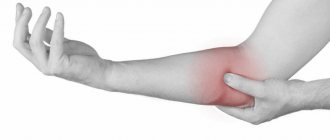Pain on the lateral side of the foot (inside) occurs quite often for physiological reasons, since the lower extremities experience the most severe stress. Some patients associate such manifestations with static and dynamic stress. In the case when the feet hurt on the inside, first of all, it is necessary to find out the reasons for the development of pain symptoms, followed by adequate treatment.
There are a number of pathological manifestations in which pain appears inside the foot. One of the predisposing factors may be certain compression and stress, under which the inside of the foot may hurt without external signs of inflammation.
The most common causes of the development of such symptoms are the following diseases:
Plantar fasciitis
At the initial stage of development, this disease quite often occurs in a latent form and severe pain that occurs in the evening is attributed to ordinary fatigue, but as the inflammatory process develops, the pain symptoms intensify and can appear even at rest.
With fasciitis, there is inflammation of the plantar fascia, which connects the heel bone and the phalanges of the toes. As the inflammatory process develops, damage to the heel bone and micro-tears of the ligaments are noted, which gradually increase, are accompanied by swelling, and sharp pain in the foot appears on the outside.
Plantar fasciitis usually develops on both extremities, however, unilateral foot lesions are also possible. The most common complications of fasciitis include the appearance of heel spurs (bone formation from calcium salts).
Getting rid of fasciitis involves taking NSAIDs, complex exercises, massage, and the use of orthopedic shoes. Provocateurs of the disease can be obesity, hereditary predisposition, foot deformities, as well as increased physical stress on the lower extremities.
Diseases
First of all, it is worth noting that the foot can also hurt after an injury, with sprains, dislocations, fractures and simple bruises. Therefore, it is very important to remember if there have been any recent foot injuries to help the doctor quickly make a preliminary diagnosis. In addition, the sole of the foot on the side may hurt due to the following diseases:
Flat feet
Flattening of the foot (or flat feet) is the most common cause of foot pain. Flat feet can be congenital, but this is rare; more often the disease is acquired, and its occurrence is usually caused by exposure to heavy objects, wearing the wrong shoes, an inactive lifestyle and problems with the spine. Flattened feet can appear at any age, and to avoid it, you need to monitor the condition of your child’s feet from childhood. First of all, it is necessary for both children and adults to eat properly and not overeat. You cannot force a child to eat; food must be adequate, tasty and balanced. It is important to note that overweight people suffer from flat feet in 90% of cases, since their legs simply cannot support tens of extra pounds. The same problem arises with physical inactivity, when a person does not exercise at all, blood circulation in the feet is disrupted, tissues lack nutrition, muscles atrophy, and feet become deformed for no reason. Flat feet are treated comprehensively. The following methods and procedures are usually used:
- Physiotherapy;
- Massage;
- Physiotherapy;
- Vitamins;
- Painkillers if necessary;
- Wearing orthopedic shoes and insoles.
As a rule, the disease in children can be prevented and cured with the help of physical therapy and massage, so that in the future the foot will be formed in the correct position. But in adults it is not possible to completely cure flat feet; conservative methods will help strengthen the muscles, relieve pain and alleviate the condition. In very severe cases, surgery may be recommended.
Heel spur
Another disease that can cause foot pain is plantar fasciitis, or heel spur. Pain, as a rule, occurs in the heel when moving, and radiates to the inner part of the foot. With this disease, deformation of the heel bone occurs, a growth appears on it, which puts pressure on the soft tissues and provokes their inflammation. A heel spur can occur for various reasons; it is often caused by foot deformities, such as flat feet, as well as wearing the wrong shoes, especially high heels, excess weight and injury. In general, the disease can be provoked by any negative factors that affect the feet, so no one, even small children, is immune from the occurrence of such a problem. Heel spurs are treated conservatively in the initial stages, and surgically in advanced stages. In any case, the patient is advised to unload the foot; if there is excess weight, then you need to try to lose it. It is also worth giving up high-heeled shoes, improving your diet and doing therapeutic exercises daily. Surgical treatment is prescribed only to adult patients in advanced cases when physical treatment does not have the desired effect. In this case, the doctor removes the painful growth using a scalpel or laser. The operation entails long-term rehabilitation, the use of antibiotics and painkillers, during which time the patient is incapacitated.
Osteoporosis
With osteoporosis, the entire foot can hurt, including the inner part, and with this disease the bone tissue is affected. The disease occurs when blood circulation in the tissues of the legs is impaired and the nutrition of the bones is disrupted; they become brittle, easily deformed and injured.
The cause of osteoporosis can be various diseases of internal organs, these are endocrine disorders, for example, diabetes, hepatitis, malignant tumors, chronic kidney inflammation. In addition, the disease often becomes a companion for older people, since with age, metabolic processes in the body slow down and can cause disturbances if preventive measures are not taken. Menopause can also trigger the disease with age in women, since at this time hormonal changes occur in the body and the amount of female sex hormones sharply decreases. As a result, the nutrition of bone tissue throughout the body may be disrupted. In all cases, osteoporosis must be treated, otherwise it will progress and cause spontaneous fractures. In old age, bones heal very poorly, so this condition can be fatal. Treatment of osteoporosis is very complex and lengthy, the course lasts at least a year, it is carried out in specialized centers only by experienced doctors. First of all, the cause that caused osteoporosis is identified and treated; painkillers are also prescribed to restore bone tissue. If there is such a possibility, the disease is treated surgically, but there are often contraindications to it, since older people usually have a large number of dangerous diseases.
Obliterating endarteritis
With endarteritis, pain in the feet occurs due to circulatory disorders, in particular, due to the influence of various negative factors, blood vessels are deformed. First of all, their spasm appears, over time the walls of the vessels thicken and they grow together, not allowing blood to circulate normally. As a result, the tissues of the feet are completely deprived of nutrition and begin to die, gangrene occurs, and this entails amputation of the limb.
The first symptoms of the disease are usually not very pronounced, the legs quickly get tired, they feel numbness and tingling. If you do not consult a doctor at this stage, the situation will soon worsen, your feet will begin to hurt very much, your skin will change color, it may become bluish or pale and marbled. The disease usually occurs only in men; it is provoked by such negative factors as smoking, especially in large quantities, hard work in hazardous work, and hormonal and autoimmune disorders can also provoke the disease. The disease is treated in the initial stages with conservative methods, physiotherapy and exercise therapy are prescribed, it is recommended to stop smoking and drinking alcohol, as these habits provoke vasospasm and narrow them. The doctor also prescribes medication that can relieve pain during movement, remove inflammation in the tissues and normalize blood circulation. Surgical treatment is indicated for serious circulatory disorders, when the vessels are strongly fused and conservative methods will not be effective. During the operation, a prosthesis can be installed or bypass surgery can be performed, and blood clots can also be removed if necessary. At an advanced stage, when gangrene has occurred, the limb is completely amputated.
Tendinitis
An inflammatory disease that affects tendons in any part of the body is called tendinitis. The disease usually occurs in the pelvis, elbows and knees, but can also affect the feet, in which case pain occurs on the inside of the sole. As a rule, the disease develops slowly and gradually, at first the patient experiences mild pain when moving, but over time the situation worsens. Pain is usually felt when pressing on the affected area with a finger, and over time the tendon crunches when moving, and in acute tendinitis, the skin around the affected area becomes red, swollen and hot. In the feet, tendonitis occurs with increased physical activity. If a person is overweight, or works in heavy work, and also constantly wears weights and high-heeled shoes, the risk of tendonitis greatly increases. To avoid the onset of the disease, you must not allow your feet to become overworked, since the main cause of tendon damage is constant and heavy loads. Treatment of tendonitis is usually conservative; the patient is prescribed anti-inflammatory and painkillers, as well as physical therapy. Various physical procedures, gymnastics, therapeutic baths and massage will help quickly restore the affected tendon. The doctor may also recommend the use of special orthopedic bandages to speed up recovery and alleviate the condition.
Ligamentite
In this case, pain on the inside of the foot occurs due to inflammation of the ligaments, painful sensations appear when moving, the motor activity of the joint may be impaired, the ligaments next to which are affected, in addition, the tissues may swell. Most often, the disease affects the tendons and joints of the hands, but can occur in any other part of the body. The cause of the disease is usually increased stress on the foot, work in hazardous work, injuries and chronic infections of soft tissues. Often the disease is a secondary manifestation of diabetes mellitus, gout and inflammatory joint diseases, such as arthritis. Treatment of ligamentitis at the initial stage is usually conservative; the patient is prescribed a number of anti-inflammatory drugs, as well as physical treatment and wearing orthopedic devices. During an exacerbation, the limb is completely immobilized using an orthopedic bandage; massage is also not recommended during this time. In advanced cases, surgery may be indicated.
Arthritis
Arthritis can cause pain in any part of the foot, including the inside. This is a disease in which the joints of the feet become inflamed, they are gradually destroyed, as a result, pain appears, and motor activity is impaired. If arthritis is not treated, over time the affected joint will stop working and will become overgrown with bone tissue. There are many causes of arthritis, here are some of them:
- Large loads on the foot;
- The presence of chronic inflammatory diseases;
- Genitourinary, intestinal and upper respiratory tract infections;
- Diabetes;
- Obesity;
- Bad ecology;
- Hypothermia of the joints;
- Elderly age;
- Vitamin deficiency, unhealthy diet;
- Lack of physical activity;
- Wearing tight shoes, especially high heels, etc.
Arthritis usually develops gradually; at first, the patient experiences mild pain in the affected joint. Usually in the morning you feel heaviness in the joint, its activity is disrupted, but with movement everything goes away. Over time, the disease progresses, the pain becomes constant, the joint crunches and moves poorly, the skin around it becomes red and inflamed. In the early stages, arthritis is treated conservatively, anti-inflammatory and painkillers are prescribed, as well as vitamins and chondroprotectors, physical therapy, and physical therapy. Baths and lotions with herbs and other folk remedies will also help get rid of pain and inflammation. In advanced forms, surgical intervention may be indicated, in which the ossified parts of the cartilage are removed and replaced with a prosthesis; the entire joint can also be replaced if necessary.
Tendinitis
This disease is caused by the development of an inflammatory process in the tendons, plantaris and posterior tibial muscles connecting the tibia and fibula. With tendonitis, the inner side of the foot hurts when flexing the ankle joint with support on the heel. In a calm state, pain symptoms decrease, but gradually the pain becomes chronic. In addition, there is hyperemia in the affected area, edema and local hyperthermia.
Characteristic localization of pain in the ankle with tendinitis
Symptoms of the disease can occur with varying intensity. Wearing uncomfortable shoes greatly aggravates the situation. With untimely (or lack of) treatment, tendinitis becomes chronic. Anti-inflammatory drugs are most often taken to relieve pain while walking.
After the acute process is neutralized, massage, physiotherapy and rehabilitation procedures are prescribed. If traditional therapy is ineffective, the issue of surgical intervention is decided, during which the affected tissue is excised.
Causes of pain
Many people complain that their feet hurt in the middle on the inside, and there can be many reasons for this. First of all, it should be noted that problems can arise for a very simple reason not related to diseases. This is excessive stress on the feet and wearing poor-quality or uncomfortable shoes, for example, walking in heels. The human foot is designed in a special way, the bones, muscles, tendons and joints are arranged so that when a person stands or walks, the weight of the entire body is evenly distributed over three points of the foot. The fulcrum points are the areas under the big toe, little toe and heel. With the correct placement of the arches of the foot, it plays the role of a shock absorber and protects the ankle, knee and hip joints from injury. If you are overweight, or if a person carries heavy objects for a long time, the foot begins to deform, the centers of gravity shift and pain appears. The same thing happens when wearing tight shoes and high heels. In the latter case, the entire load falls on the toe of the foot, this part is constantly loaded and deformed, and then pain occurs. Also, the cause of pain on the inside can be various diseases of the legs. Many of them arise as complications of the symptoms described above. If a patient wears high-heeled shoes for a long time and does not pay attention to mild daily pain, over time the symptoms will intensify and develop into a serious inflammatory process.
Arthritis
In 75% of all cases of arthritis, it is caused by infectious processes in the joint tissues, and the remaining 25% are caused by foot deformities. Risk factors include obesity, excessive physical activity and metabolic disorders in the patient's body. Most often, arthritis affects both feet at once, but this does not exclude that only the right or left leg can be affected by the inflammatory process.
At the beginning of the pathological process, discomfort occurs only after running and long walking, but over time the symptoms become more complicated, which leads to limitation of motor activity of the joint. To identify the severity of the condition, diagnostics are carried out, after which adequate therapy is prescribed.
Arthrosis
The clinical symptoms of arthrosis strongly resemble a heel spur, in which pain appears in the sole, on the side (closer to the heel), limiting the motor activity of the ankle joint. As symptoms intensify, the formation of osteophytes, crunching when moving, and weather sensitivity are possible.
Deforming arthrosis of the foot
A characteristic sign of arthrosis is the subsidence of pain in a calm state. The patient takes a gentle position, trying not to step on the heel, and transfers the main load to the fingers. This feature explains the fact that it is the outer side of the foot that hurts. Complex therapy involves the use of medications, massage, exercise therapy, etc. For stages 4 and 3 of arthrosis, intra-articular injections are performed, and, if necessary, surgical intervention is performed.
Cuboid syndrome
The cuboid bones of the tarsus, located on the middle part of the foot, can be injured not only as a result of a direct and sharp blow, but also when the bones (calcaneus and metatarsal) compress soft tissues. The cuboid bones serve to support the arch of the foot. With a sharp arch or injury, especially in professional athletes, sharp pain appears on the side of the foot.
The cause of the disease can be:
- compression and fracture of the cuboid bone;
- strong arching, causing pain in the arch of the foot;
- stress (fatigue) fracture, which is most common in athletes who perform exercises to the limit of their capabilities.
Diagnosis of the disease is difficult due to the gradual increase in symptoms. X-ray examination is not always effective, so CT and MRI are most often prescribed. Therapeutic measures include fixing the foot with a plaster splint, splint or tight bandage, followed by taking non-steroidal anti-inflammatory drugs, chondroprotectors and vitamin complexes.
Shoes
This problem is extremely relevant for female representatives.
- Form. Here we are talking about high-heeled shoes and completely flat soles. In the first option, the leg is placed in an unnatural position and blood circulation worsens. In the second case, the risk of developing flat feet increases and, just like in the first option, the flow of blood to the limb occurs.
- Poorly fitted shoes may be too small or the wrong shape, causing your toes to take an unnatural toe position.
We recommend using shoes that are as spacious and light as possible, and even more so, changing to high heels when you are at work.
Valgus deformity
When the metatarsal phalanx of the big toe is bent, the joint may deviate outward, which leads to the formation of a lump on the outer head of the 1st metatarsal bone. The deformity may be present on both limbs, but the resulting lumps may differ significantly from each other. The degree of curvature of the foot, as well as the intensity of pain symptoms, directly depends on the stage of the disease.
When valgus deformities are complicated, bursitis or Deichlander's disease (marching foot) may develop, as a result of which partial resorption of bone tissue is observed with its subsequent regeneration. Traditional therapy is complemented by physiotherapy, exercise therapy and orthopedic devices.
Bunion of the big toe
Tarsal coalition
This disease is extremely rare (in 1% of patients) and develops as a result of fusion of 2 or more bones of the foot. Tarsal coalition most often occurs with mild symptoms. In this disease, a fusion of the calcaneus and talus is diagnosed, but the involvement of the inflammatory process of the talonavicular and calcaneonavicular coalition is also possible.
Such bone tissue anomalies are classified as congenital and become active only in adolescence, manifesting themselves with the following symptoms:
- spasm of the calf muscles;
- frequent ankle sprains;
- limited motor activity of the foot;
- hallux valgus.
In the absence of timely intervention, a degenerative process in the joint may develop, so if pain appears on the lateral part of the feet, you should consult a specialist. In severe cases of symptoms, resection or arthrodesis is performed.
Sprains (ruptures) of ligaments
Often the cause of pain in the lateral part of the feet is sprains and torn ligaments as a result of an unsuccessful fall. When partial ligaments are torn or sprained, the upper and lateral parts of the feet become swollen, and the legs hurt both at rest and during movement.
Stages of a foot sprain
With a complete rupture of the ligaments of the outer part of the feet, the legs swell to the left and right of the ankle joint, as well as in the plantar region. Treatment for tears involves surgically suturing the fibers by making an incision at the site of the injury. In some cases, ligament rupture is complicated by hemarthrosis (accumulation of blood in the joint cavity), which requires emergency medical intervention.
Prevention and prognosis
Only a doctor can speak about an accurate prognosis after determining the cause of foot pain and the stage of the disease.
As a rule, the prognosis is always favorable if a person begins treatment at an early stage of any disease, therefore, if foot pain occurs, you should urgently visit a doctor. Prevention of foot diseases lies in their improvement. Women should limit wearing high-heeled shoes and change into comfortable shoes during the day. You also need to take measures to improve blood circulation in the feet, massage in the evenings and relaxing baths. It is important to understand that the legs undergo enormous stress every day, so a person should try to make their work as easy as possible. To do this, you need to provide your feet with normal rest, try to get rid of excess weight, and lead an active and healthy lifestyle. Share:
Vascular pathologies
Acute pain on the inside of the feet is possible as a result of damage to the vessels of the lower extremities, which worsens tissue trophism. At the same time, an insufficient amount of nutrients enters the cells, and they gradually die.
With early diagnosis, the following symptoms are identified:
More article:Ointments for foot arthrosis
- legs get tired quickly even when walking calmly for a short distance;
- the soles of the feet may periodically become numb;
- possible paresthesia of the lower extremities;
- convulsive contraction of the calf muscles occurs with a certain frequency;
- the skin acquires a bluish tint and is covered with a marble pattern;
- as a result of significant thinning of the walls, ruptures of blood vessels occur, accompanied by hematomas;
- the lower extremities are constantly cold even in the hot season, and the formation of trophic ulcers is possible.
Subsequently, the symptoms increase, and the pain becomes permanent, appearing even at rest. In the absence of timely assistance, the disease becomes chronic and provokes the development of severe complications, including complete or partial immobilization of the limbs.
Many patients, especially women who want to preserve the beauty of their legs for as long as possible, are interested in the question of why vascular pathologies occur, and is it possible to prevent such a condition? Most often, such manifestations are associated with obliterating endarteritis, Raynaud's disease, systemic vasculitis, diabetes mellitus and vascular atherosclerosis.
In a complicated course, obliterating endarteritis can lead to the formation of ulcers
Complex therapy for diseases of the circulatory system necessarily includes medications to strengthen vascular walls and vasodilators. In severe forms of the disease, surgical intervention (bypass surgery and sympathectomy) is required.
In most cases, vascular diseases can be prevented by following a number of simple rules, which include wearing comfortable shoes, weight control, reducing physical activity and timely medical examination, especially if there is a genetic predisposition to such diseases.
Contacting specialists (orthopedist, traumatologist, cardiologist, etc.) allows you to identify the disease at an early stage of its development. To clarify the diagnosis, it is recommended to conduct an X-ray examination, computed tomography, as well as blood and urine tests.
Diagnosis of diseases
The treatment of pain in the feet on the side should be handled exclusively by a doctor, as they may indicate the presence of one of the serious diseases described above. First of all, the patient should visit a general practitioner and tell him about his feelings and complaints. If a general practitioner suspects something is wrong, he will definitely refer the patient to a specialist, such as an orthopedist, rheumatologist, neurologist or surgeon; consultation with an endocrinologist and other specialists may also be necessary. If the therapist does not detect a serious illness, and the patient’s condition worsens, it is necessary to visit the doctor again. Since in the early stages the clinical picture of diseases is very blurred, and even with X-rays, ultrasound and other studies, it is not always possible to detect them. When diagnosing a disease, the patient is referred for various studies and prescribed tests, depending on the preliminary diagnosis. Usually the patient is always sent to donate urine and blood, and for x-rays. Hormone analysis, puncture of joint fluid, ultrasound, CT, MRI, arthroscopy, etc. may also be indicated.
